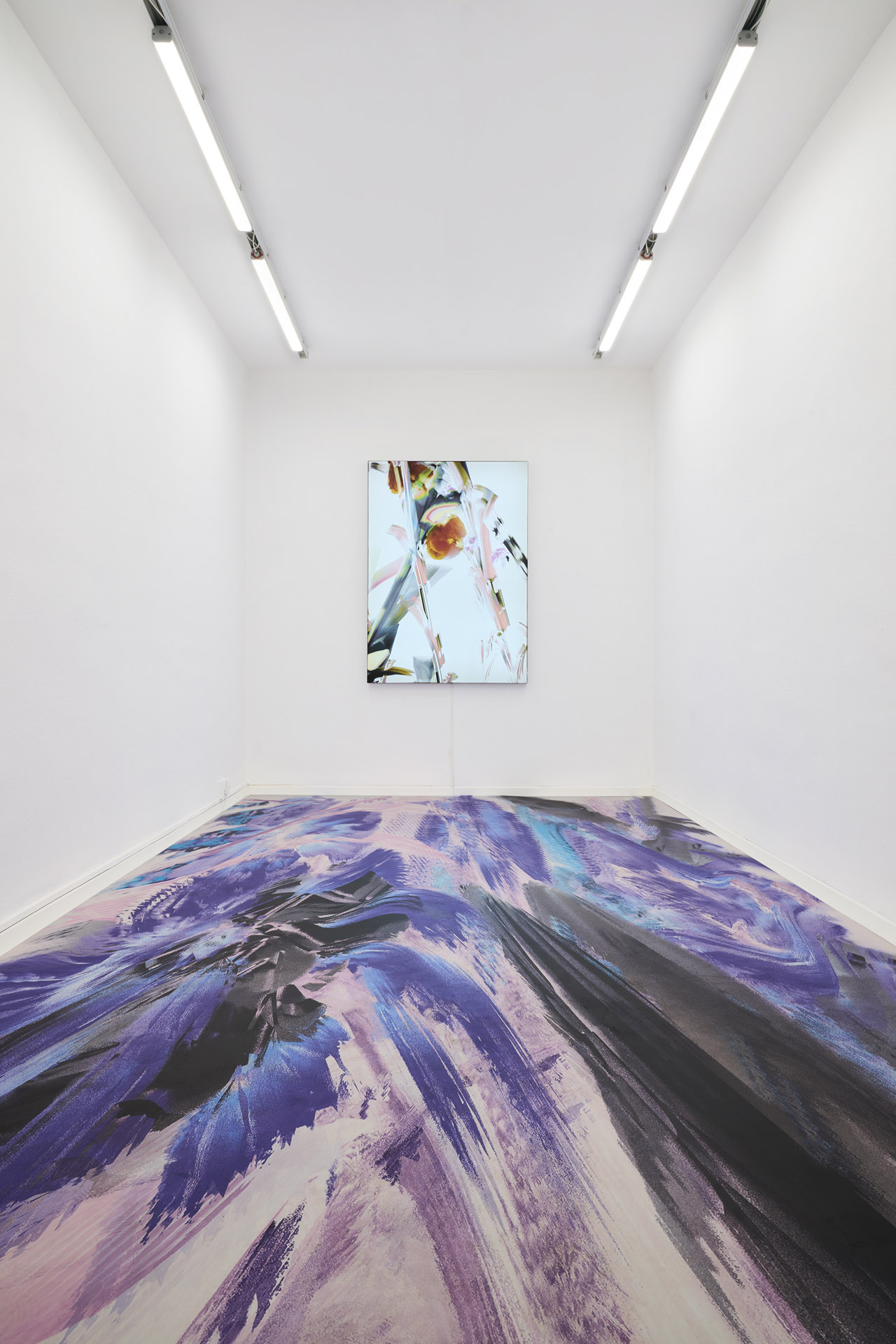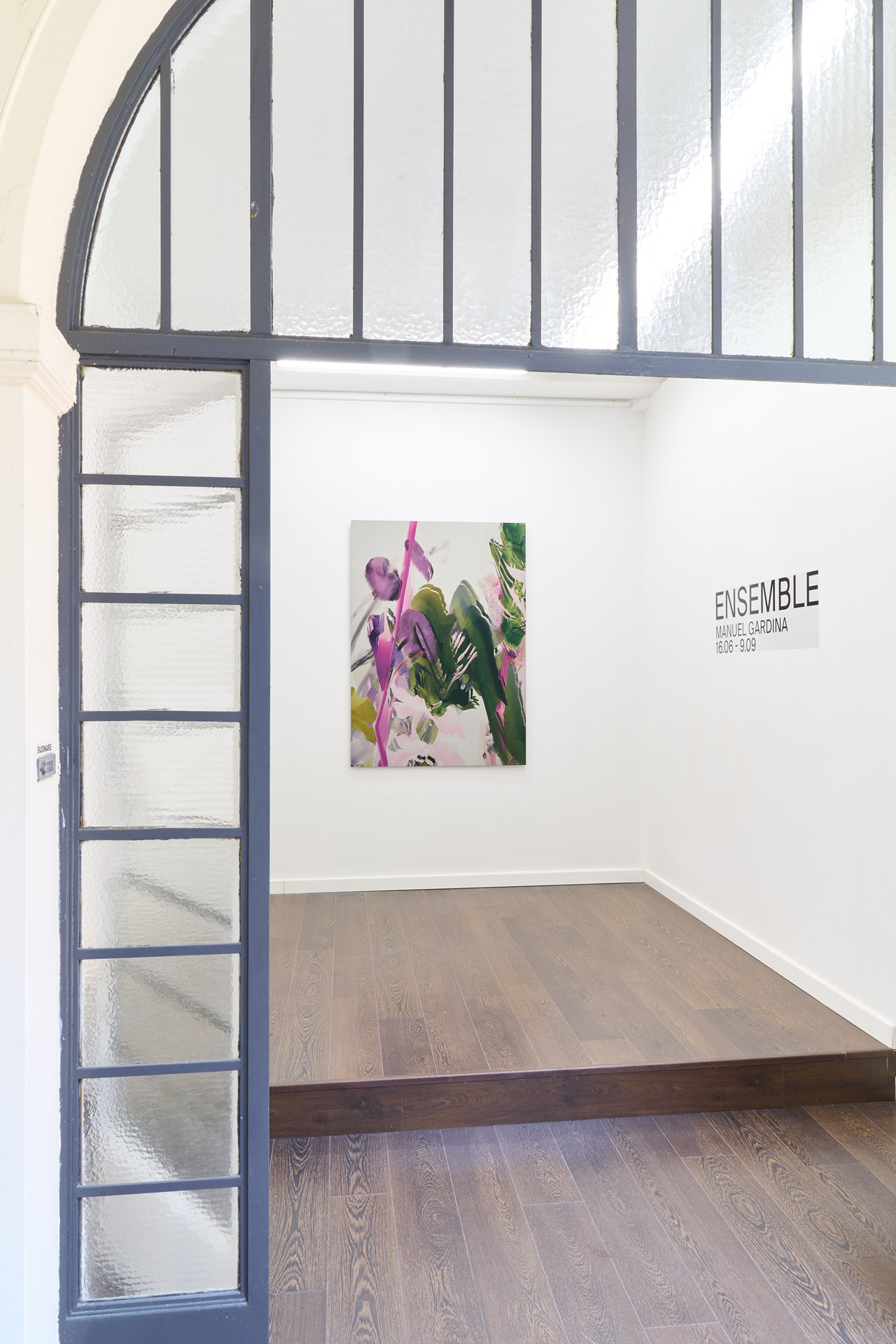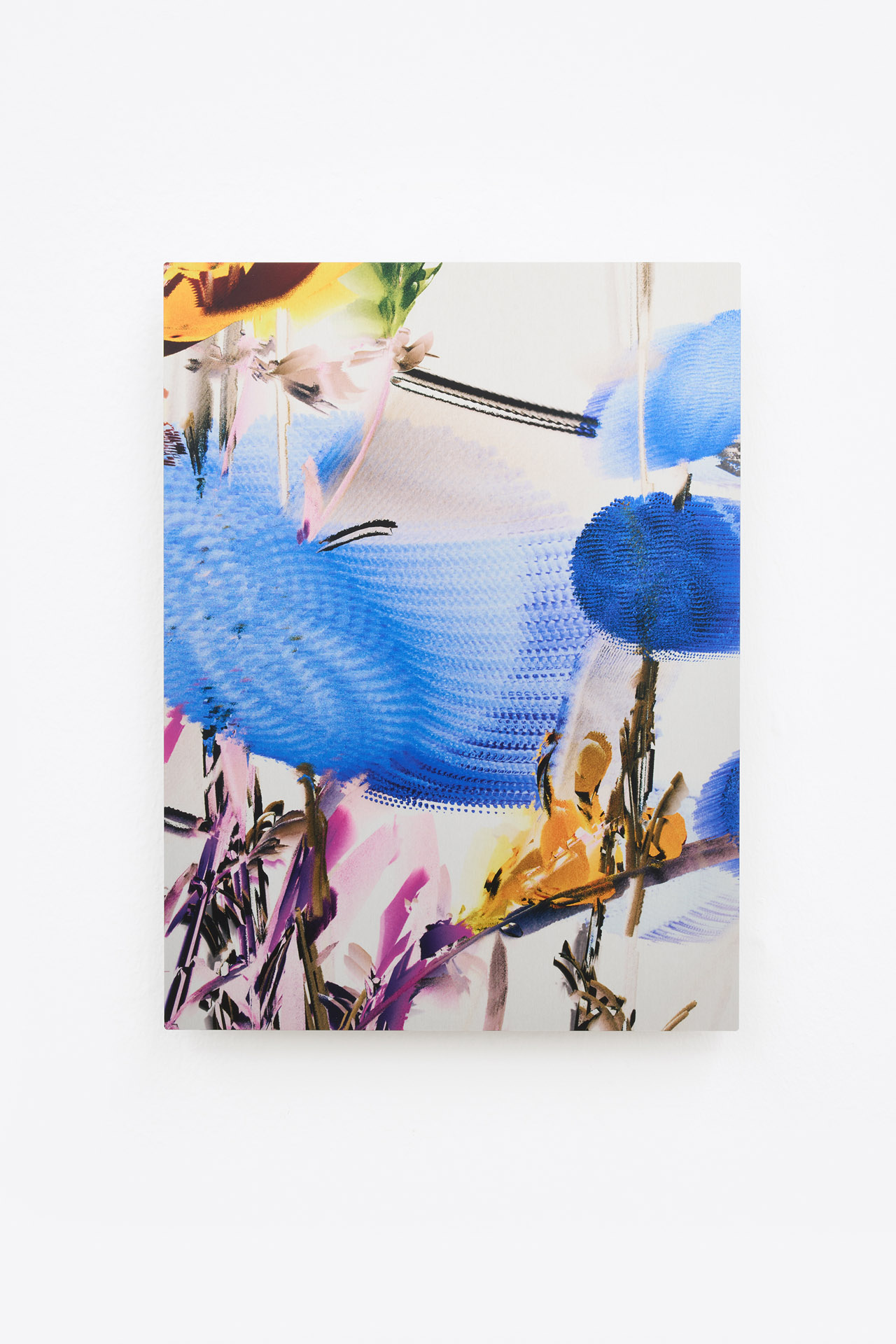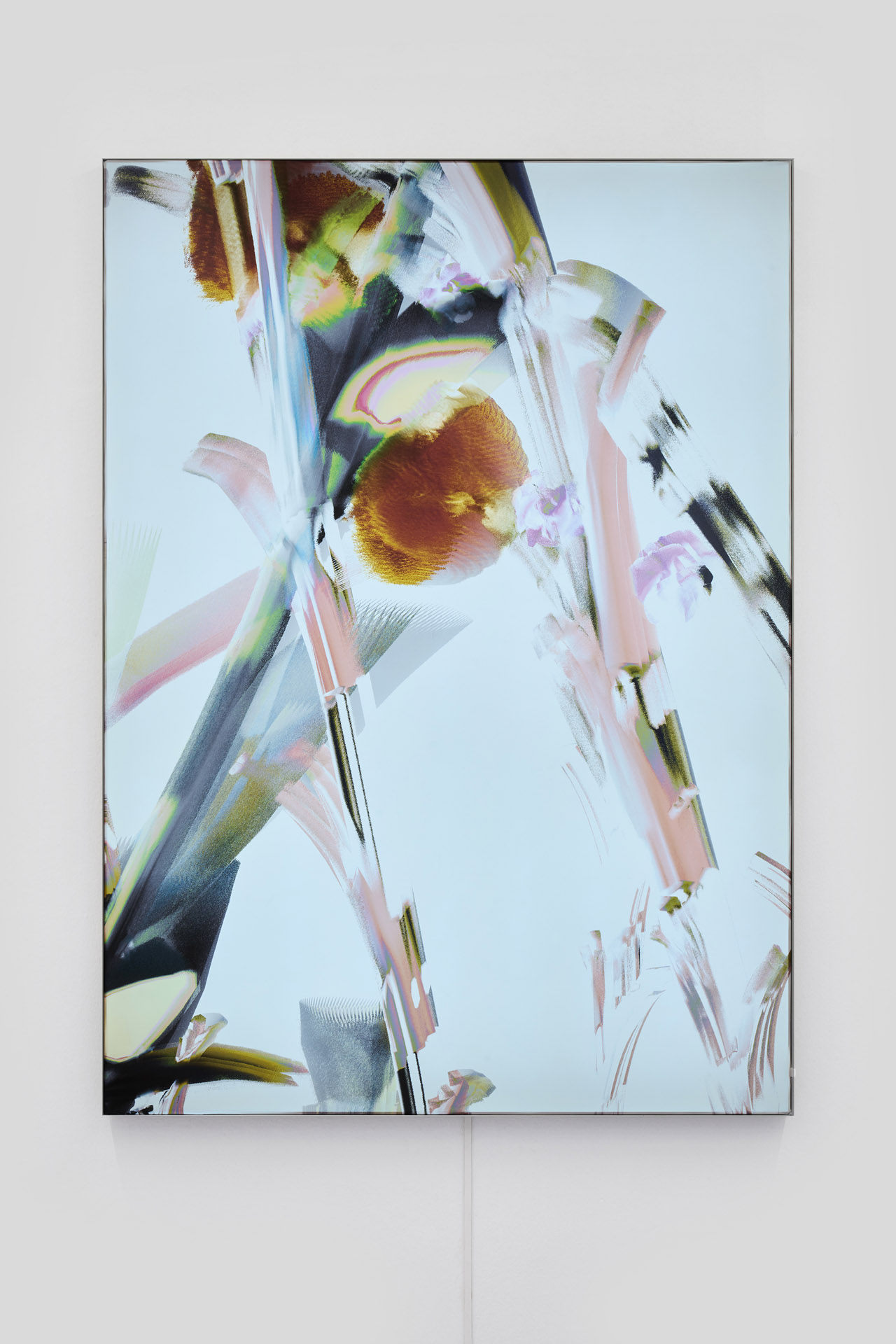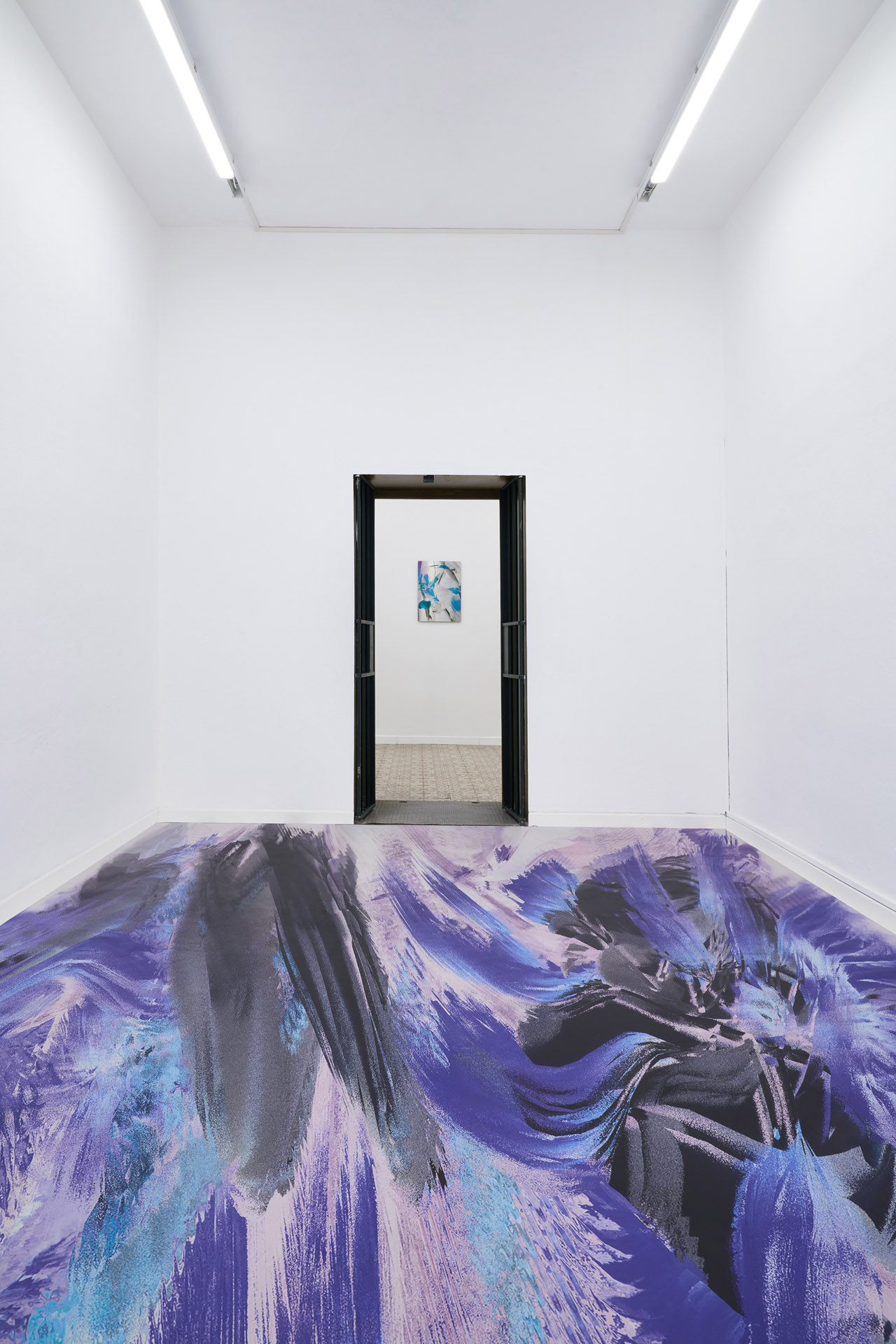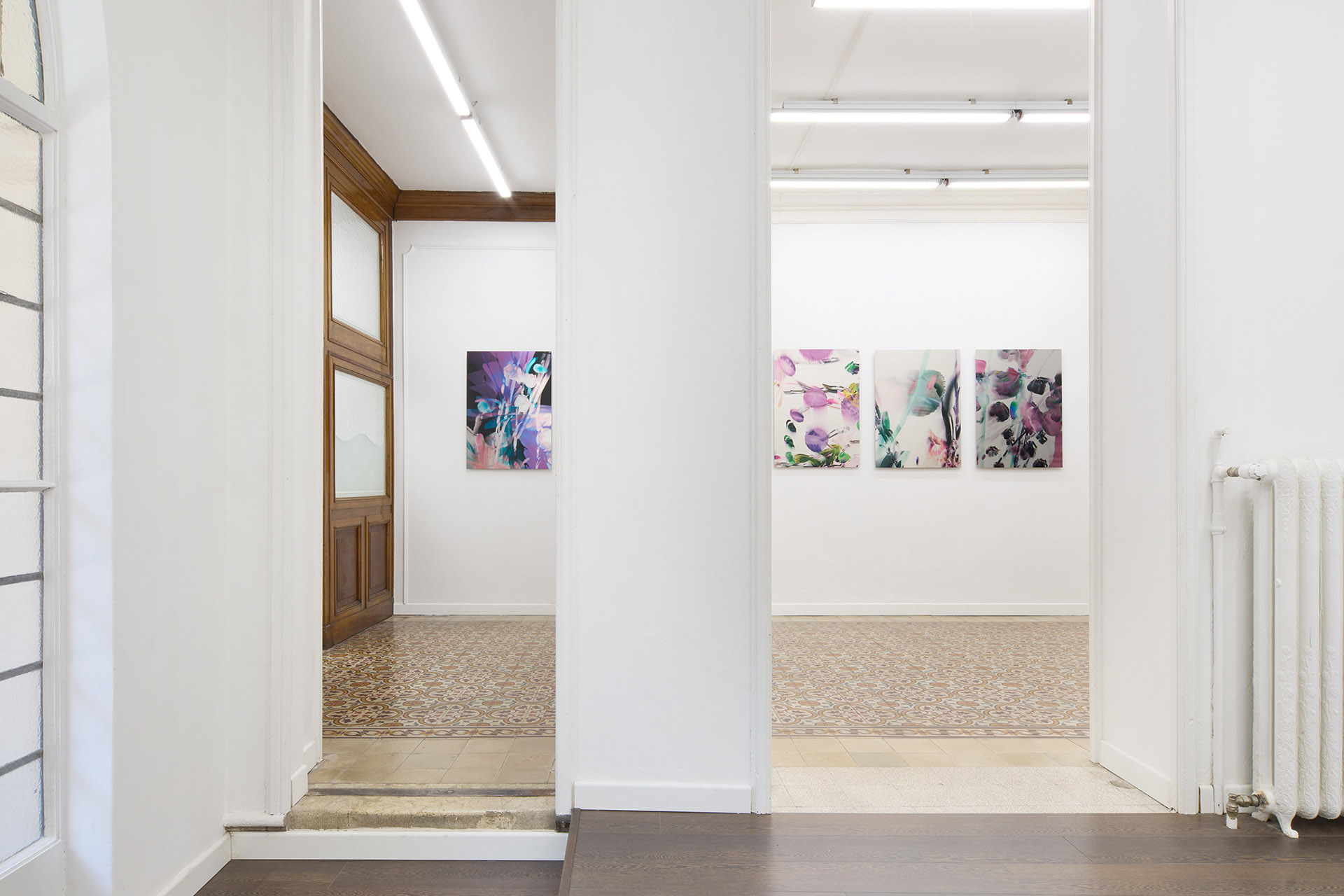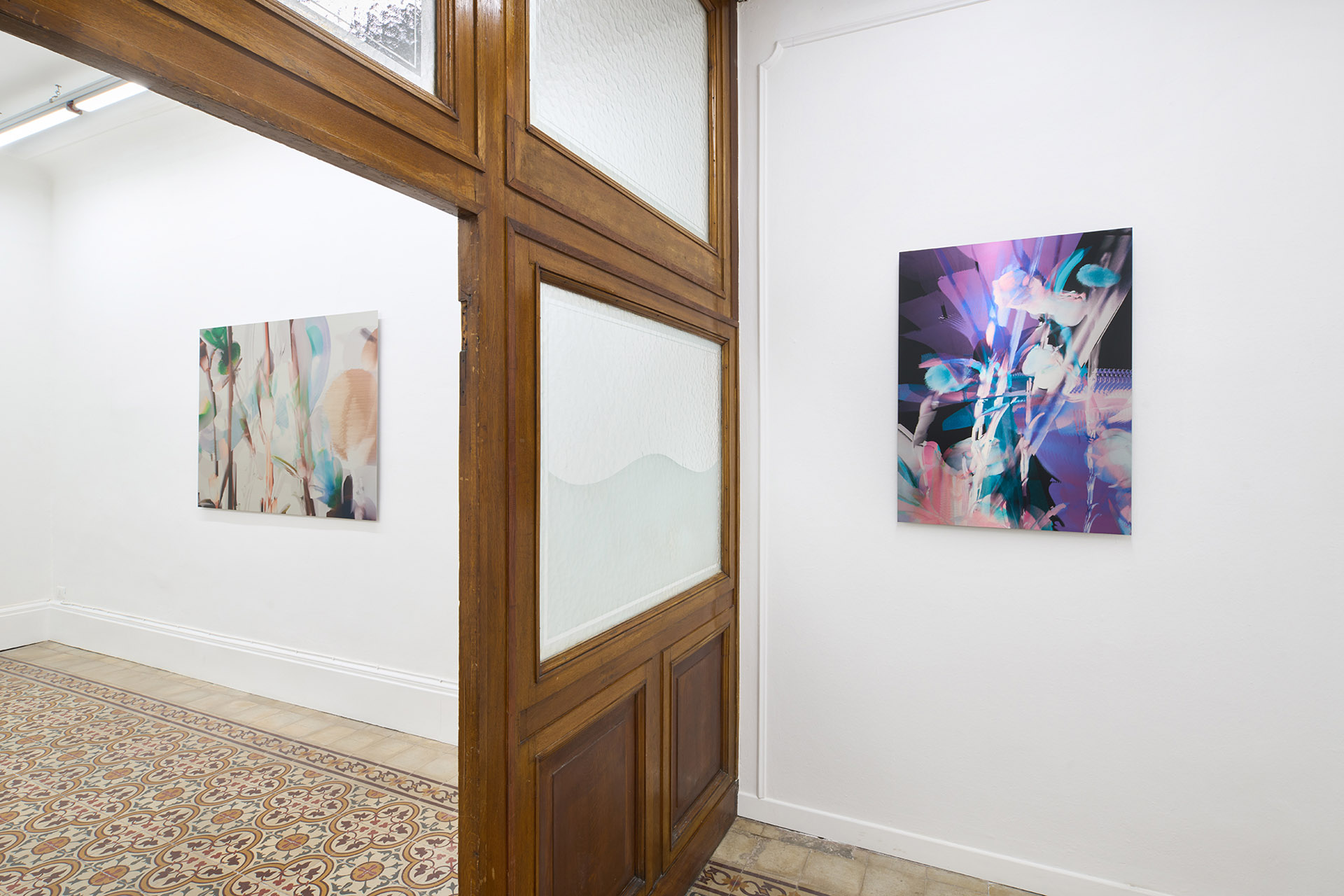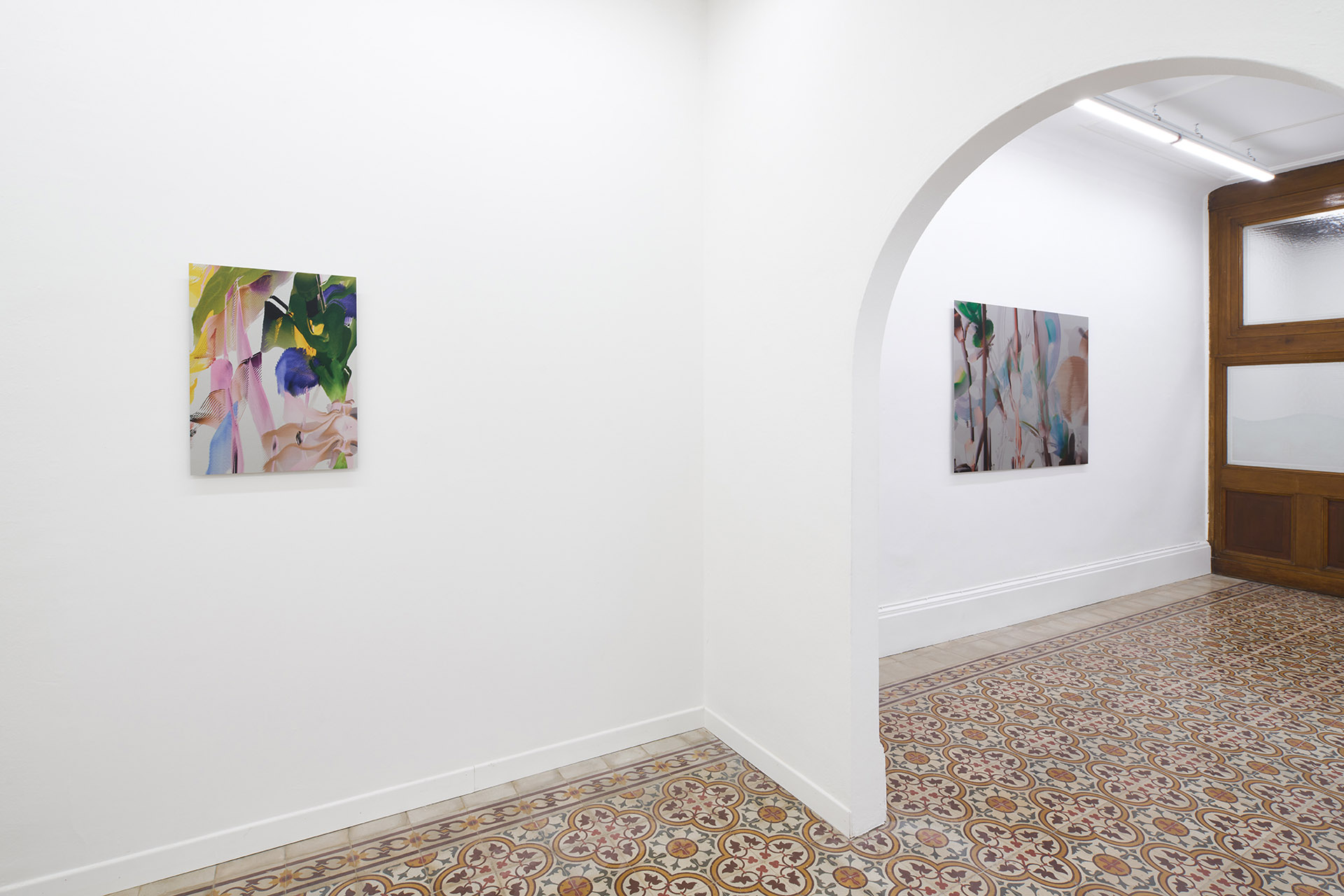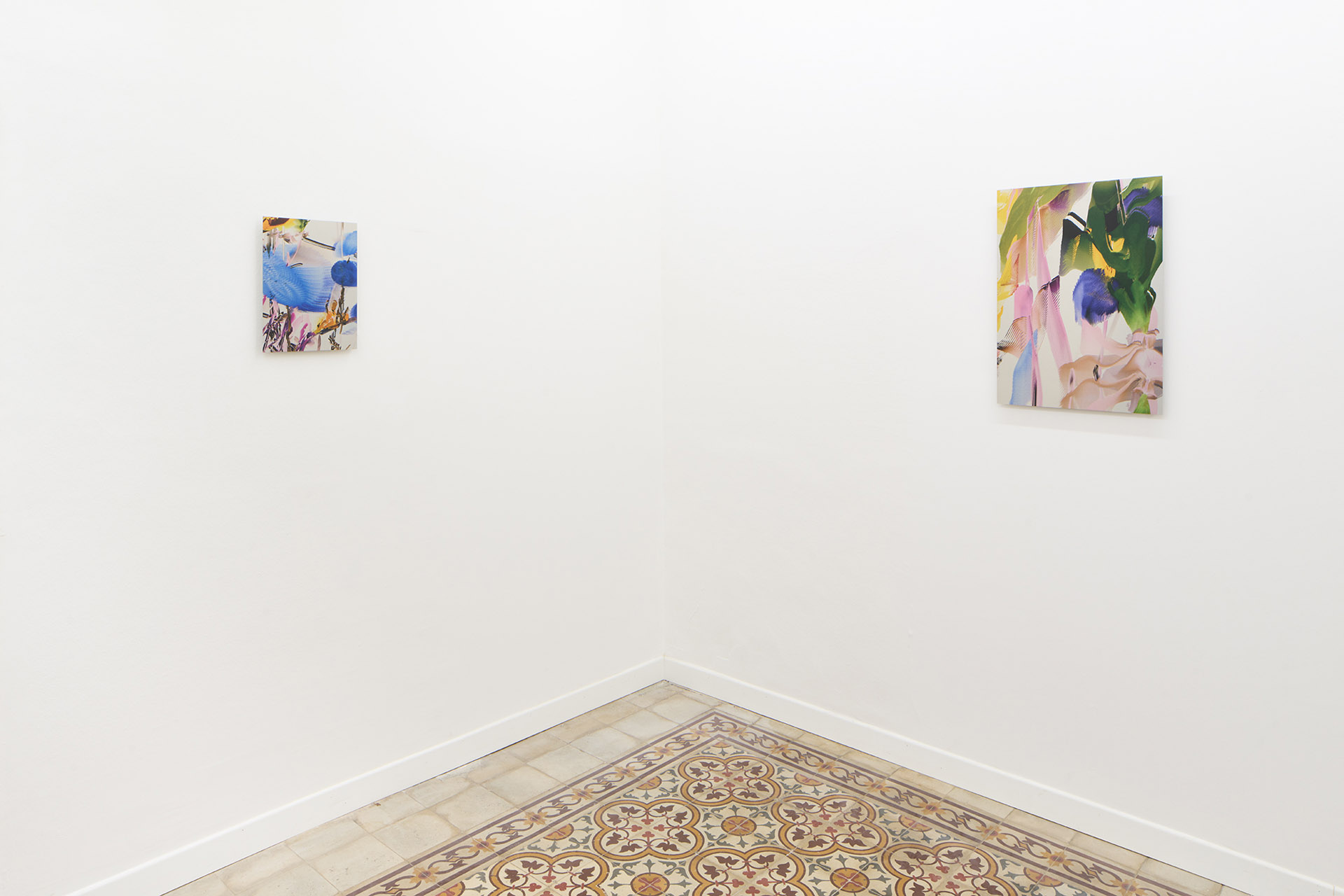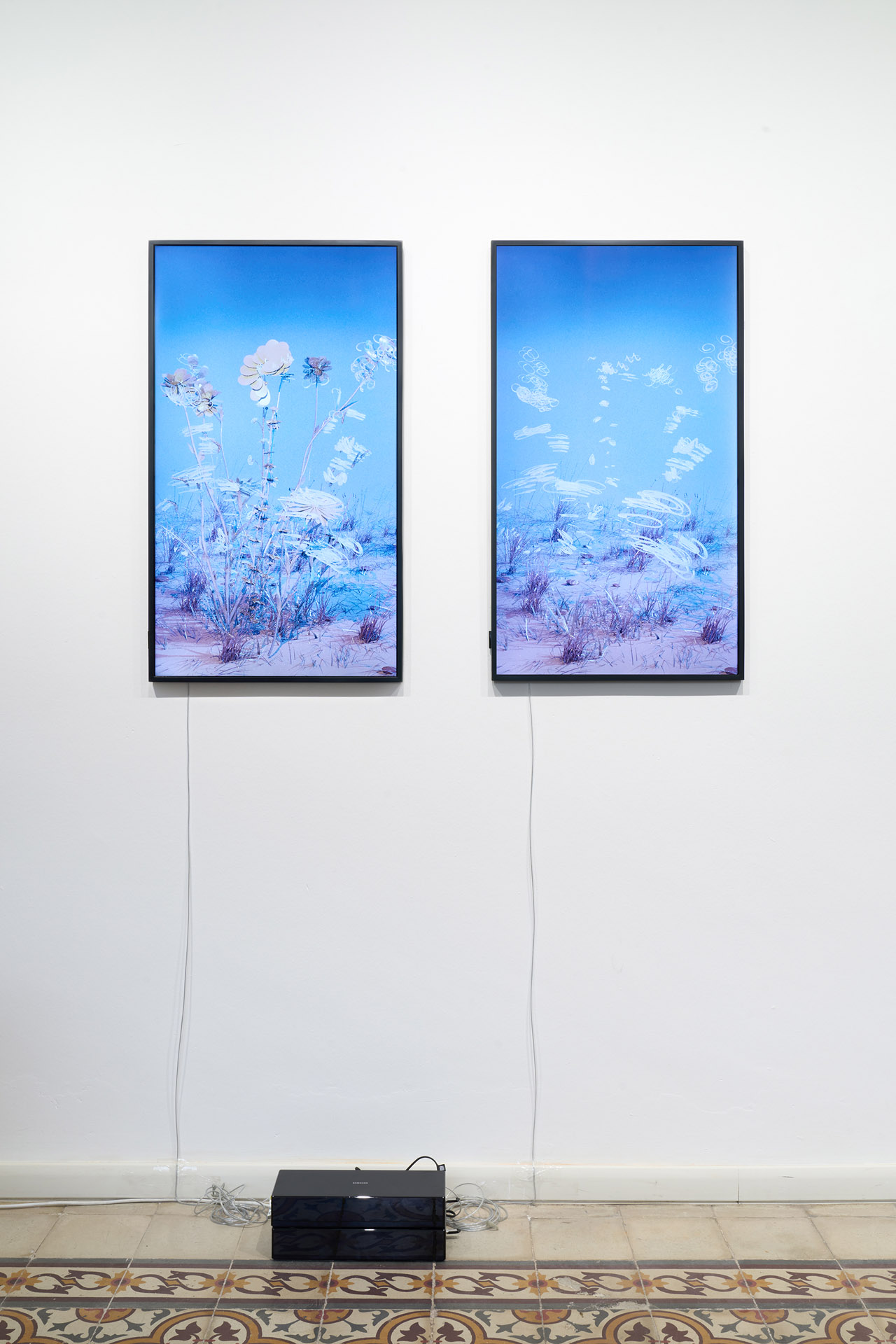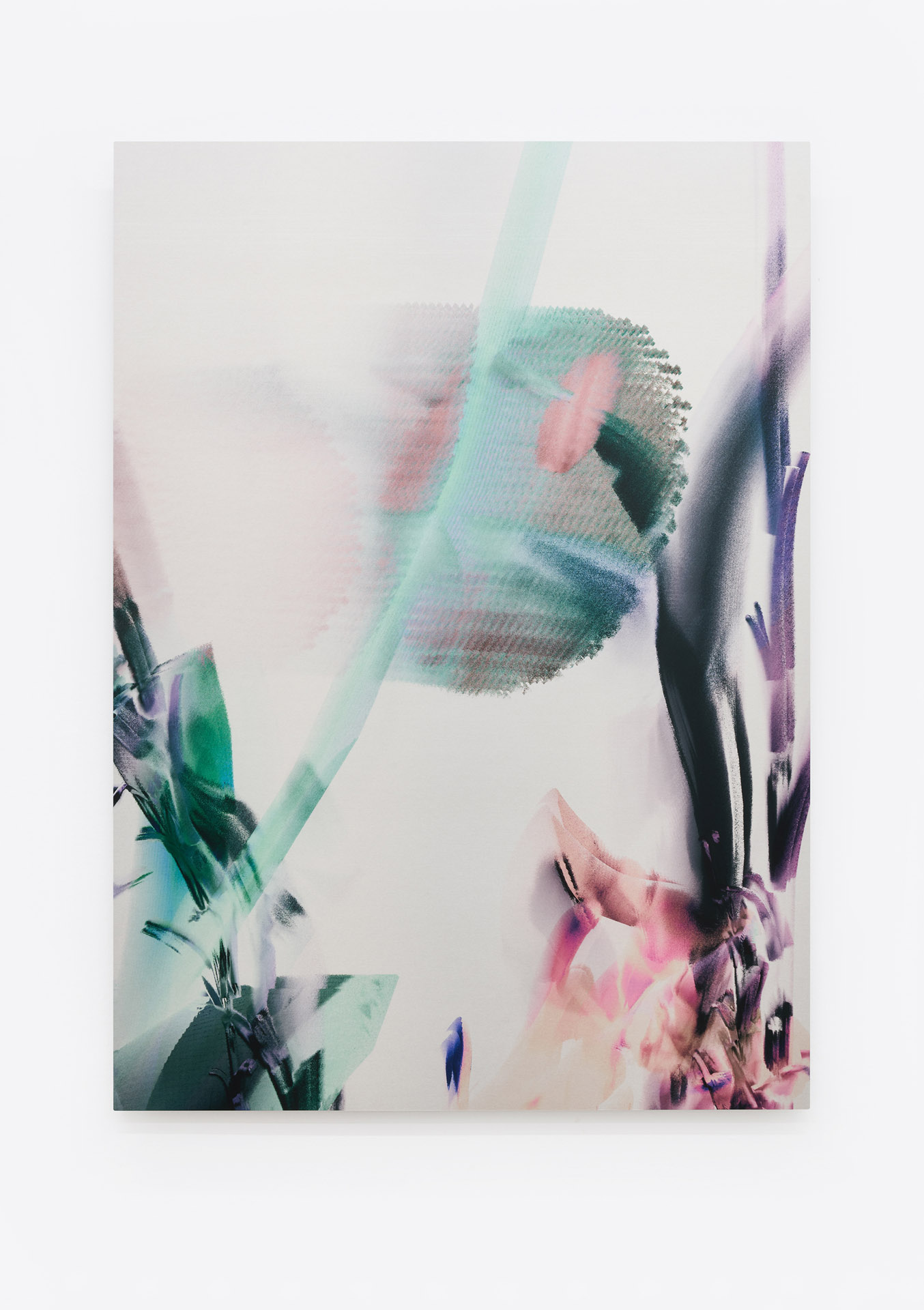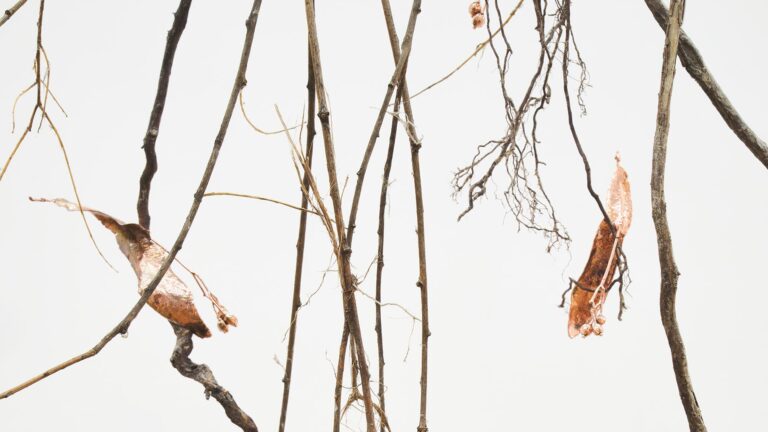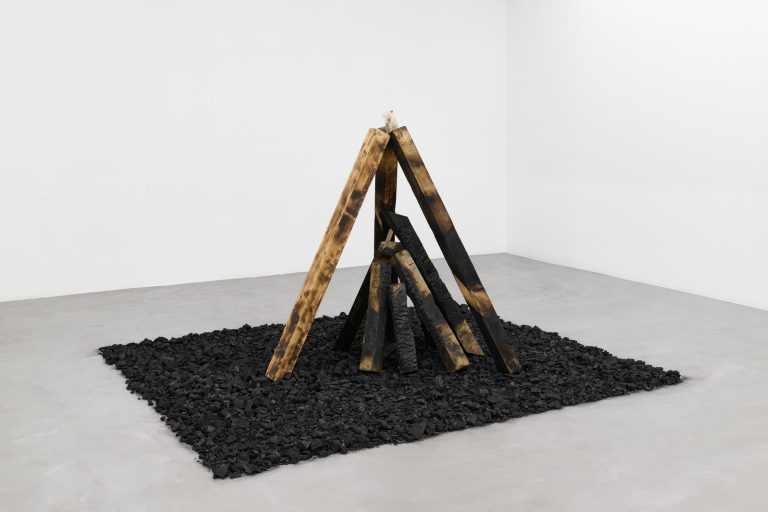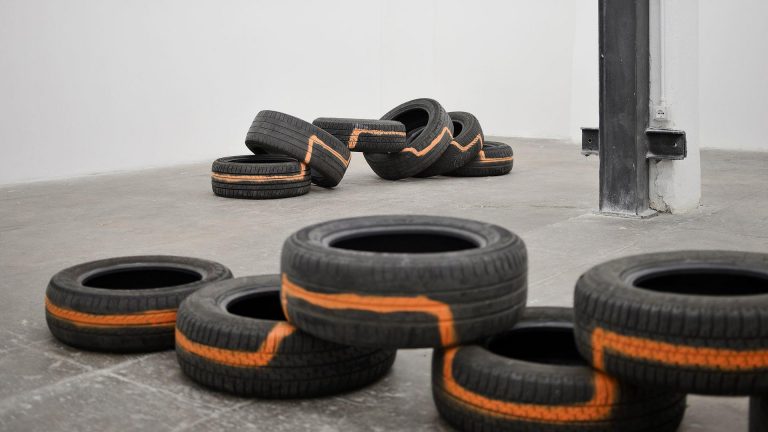Artist: Manuel Gardina
Exhibition title: Ensemble
Curated by: Riccardo Angossini
Venue: The Address, Brescia, Italy
Date: June 16 – September 9, 2022
Photography: all images copyright and courtesy of the artist and The Address, Brescia
What sound does flowers make when they open, when stems stretch, when leaves unbend to the wind? How does they spend their time while waiting to open themselves?
Manuel Gardina brought his garden into The Address.
We find it under our feet, it seems milky from the darkness, it flourishes in front of our eyes.
Subtle, it throws itself into us: a luxurious vegetation that, while bowing down, digs spaces and cavities of possible gaps, makes little noises, triggers very slow movements.
Ensemble is the first Italian presentation of Gardina’s new path, focused on the inquiry on and about the new media, aimed at revisiting and digitally summarizing the surrounding world, analyzing(it) with the PC’s eye and translating the spontaneousness into programmed languages of codes and technology, into a wider reflection on the boundary between natural and artificial.
It is a real site-specific project, created deliberately for The Address’ facilities, as a direct consequence of an intense discussion between the artist and the gallerist: formally, an imagistic jubilation composed by bi-dimensional works, environmental setup, light box, videos and NFT.
It is conceived as an effort on the issue of time and the transformation of nature through the (possible?) synthesis of the digital.
“Keeping track of flowers’ movements and natural elements, digitally molded, and giving them back as video content, I conducted research on the natural aesthetic and digital imagery, working with the modelling and simulation of forces like wind and gravity; prototypes of flowers and plant elements whose movement, carefully organized and recreated, leaves behind his unfolding a trace, a path, a gentle and colored footprint, like a natural sign – hence the title “Shomei” (Signature). Unexpected and ever-changing, a ballet of softly twisting shaded shapes. The soundtrack is composed by environmental sounds and tapes that I selected through time, commanded by the use of my voice and re-recorded in real time, drawing inspiration from the animated product”.
Along this direction, like the artist writes, he fits with character into an inquiry path that, from Plessi to Viola, from Quayola to fuse*, employs the digital in a humanistic dimension of technologies: Gardina points out, at this level of research, an even pictorial declination of a supervised composition that, on the other hand, doesn’t waive the potential glitch off.
Ensemble is the harmonious name of a botany that, through digital code, exasperates the colossal issue of time representation through movement, and vice-versa – with all due respect to the whole western aesthetic thought, from Aby Warburg’s Pathosformeln, to Gilles Deleuze’s theories, in order to remain on the XX century mainland and not sink in the XXI’s lagoon.
From these conceptual ceilings, Gardina triggers his synthetic efflorescence, whereas at a glance the comprehension seems nuanced, and within the fragments we can catch a glimpse of a long-awaited peace and a landing place, unstable.
Ravenous flowers that consume the digital code and the technologies that mingle with nature.
A feasible new ancient beauty: how much may we control the path of time that changes things? Little or nothing. Flowers occur, petals fall, seeds sprout.
Everything has a sound that we know we don’t know, but that at the same time we recognize because it’s part of our transformation. Thus, flowers sign their condemnation to life, leaving wakes and tracks of disregarded impermanence.
Videos, sounds and finely crafted support, the perfect print, light that bleaches the image’s boundary and takes the eye elsewhere, behind the image itself, each detail of this project keeps track and aggravates the paradox for which nature exists, if we envision it.
With this project, entitled Ensemble, Gardina shows us that each feature is part of a balanced and lingering unicum.
-Ilaria Bignotti

